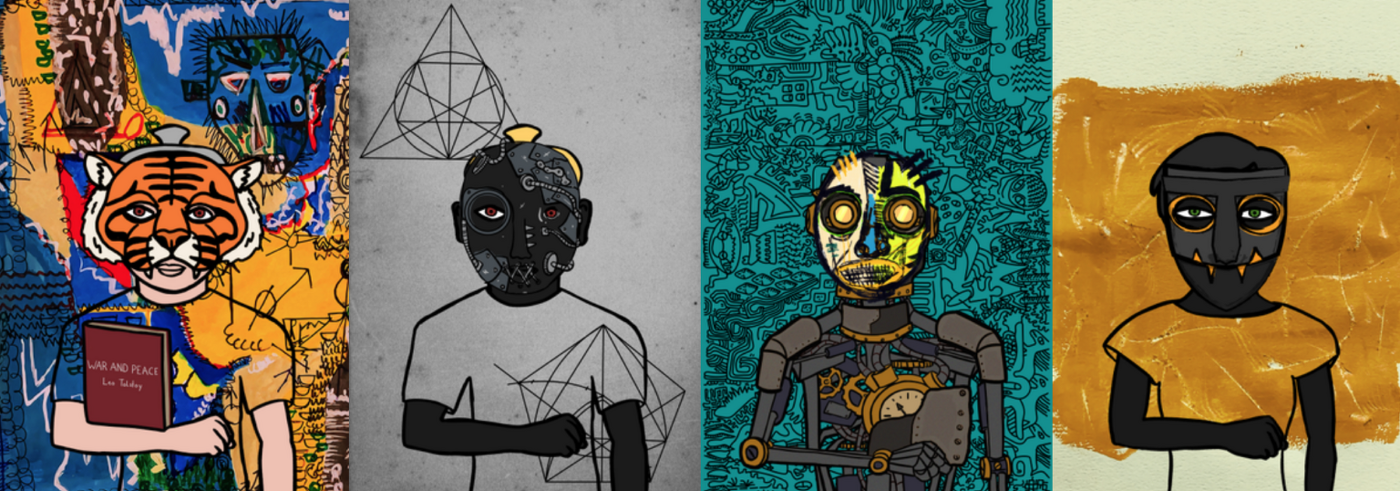Celebrities, musicians and artists have been rushing to jump on the NFT bandwagon having seen its potential for lucrative returns. Russian punk music and activist group Pussy Riot has joined the ranks, but this time for philanthropic reasons. Proceeds from the sale of their NFT ‘Terrestrial Paradise’, derived from a recent music video, will go towards activist and charitable causes.
Pussy Riot Drop NFT Music Video
‘Terrestrial Paradise’ is a clip from the official music video for Pussy Riot’s new single, Panic Attack. The punk group minted the video as a four-part NFT. On March 14, the first part sold for 100 ETH (about $240,000) in an auction on the platform Foundation. The video is a psychedelic augmented-reality experience that begins in a paradisiacal garden but quickly turns dark and dystopian. Asad J. Malik, a film director known for his use of augmented reality for storytelling, directed the video, captured with 106 cameras.
Pussy Riot co-founder Nadya Tolokonnikova is the protagonist of the video. Featured as a hologram, she runs like a video game character through the apocalyptic world. In a clip on Twitter, Tolokonnikova says the music video deals with mental health issues. “We were thinking about depression and what causes it,” she says. She adds that depression results from “objectification of human bodies — especially female bodies — that’s why in the video I encounter my own slaughtered clones.”
Tolokonnikova is no stranger to the world of crypto. Talking to TechCrunch, she said, “I’ve been using cryptocurrency before this. Masha [Alyokhina, Pussy Riot co-founder] had problems with her bank accounts. Whenever she would open one, the government would shut it down because she would use some of her money for protestors. Right now she can’t even have her own credit card.”
Pussy Riot has spent 10 years staging unauthorized concerts and other manifestations. They perform in support of feminist and LGBT rights and in opposition to Russian President Vladimir Putin. Two members of the group, Masha Alekhina and Lucy Shteyn, are currently under house arrest. They had participated in protests supporting opposition leader Aleksei Navalny earlier this year.
NFTs for Activism
Pussy Riot is now using blockchain-based technology and a four-part series of NFTs from their Panic Attack music video to continue their activist work. The group say they will donate the thousands of dollars raised from the sale of the first NFT to women’s shelters in Russia for victims of domestic violence. As Tolokonnikova told TechCrunch, “Women in this region are still being treated as property. There’s a stigma. A lot of these women are queer or did something like smile at a stranger, things that are associated with shame on the whole family.”
The buyer of the NFT was Amir Soleymani, an Iranian-born art collector, crypto art fan and political activist. He wants to set an example for other crypto art collectors. He told The Art Newspaper, “We can use NFTs to support good causes and communities, it’s a great thing to do, so I’m happy to be part of this.”
Crypto for Social Change

‘Terrestrial Paradise’ is not the punk group’s only foray into the crypto world. TechCrunch reports that Pussy Riot is collaborating with pop artist Viktoria Modesta. The group is also sponsoring an NFT scholarship program to assist feminist artists with Ethereum transaction fees. Tolokonnikova also says that the profits of the NFT music video sales will go towards making more activist art.
Tolokonnikova is particularly passionate about highlighting the benefits of crypto art and NFT technology for women artists. She said, “That is a game-changing dynamic for so many artists who, for the first time in their careers, will be recognized as artists […] we want to make our own tiny steps to bring more female and queer artists in the space.”
“I’m incredibly excited about this emerging community of decentralized supporters of art and art creators,” Tolokonnikova says in her Twitter video. “As an anarchist, I’m really excited about any tool that helps me to undermine the existing system of the status quo.”





